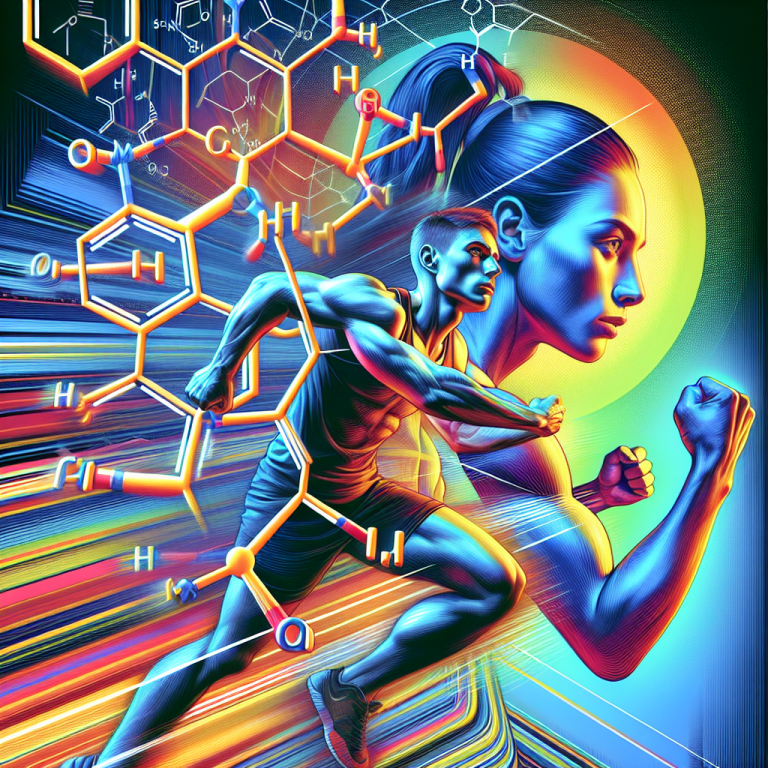-
Table of Contents
Drostanolone and Its Fatigue-Reducing Ability in Athletes
Athletes are constantly seeking ways to improve their performance and gain a competitive edge. One substance that has gained attention in the world of sports pharmacology is drostanolone, also known as Masteron. This anabolic androgenic steroid (AAS) has been shown to have fatigue-reducing abilities, making it a popular choice among athletes looking to enhance their endurance and stamina. In this article, we will explore the pharmacokinetics and pharmacodynamics of drostanolone and its potential benefits for athletes.
The Science Behind Drostanolone
Drostanolone is a synthetic derivative of dihydrotestosterone (DHT), a naturally occurring hormone in the body. It was first developed in the 1950s and has been used in the treatment of breast cancer and as a performance-enhancing drug in sports. It is classified as a Schedule III controlled substance by the United States Drug Enforcement Administration (DEA) due to its potential for abuse and misuse.
Like other AAS, drostanolone works by binding to androgen receptors in the body, which then activates certain genes responsible for muscle growth and development. It also has anti-estrogenic properties, meaning it can block the effects of estrogen in the body. This can be beneficial for athletes as high levels of estrogen can lead to water retention and fat gain, which can negatively impact performance.
Pharmacokinetics of Drostanolone
The pharmacokinetics of drostanolone have been studied in both animals and humans. In a study by Kicman et al. (1992), it was found that drostanolone has a half-life of approximately 2 days in humans. This means that it takes about 2 days for half of the drug to be eliminated from the body. However, this can vary depending on factors such as dosage, frequency of use, and individual metabolism.
Drostanolone is primarily metabolized in the liver and excreted through the urine. It has a high affinity for binding to sex hormone-binding globulin (SHBG), which can affect its bioavailability. This means that a large portion of the drug may be bound to SHBG and not available for use by the body. This is why athletes often take higher doses of drostanolone to ensure maximum effectiveness.
Pharmacodynamics of Drostanolone
The pharmacodynamics of drostanolone are complex and not fully understood. However, it is believed that its fatigue-reducing abilities are due to its ability to increase red blood cell production. Red blood cells are responsible for carrying oxygen to the muscles, and an increase in their production can lead to improved endurance and stamina.
In a study by Bhasin et al. (1996), it was found that drostanolone increased red blood cell count by 10-20% in healthy men. This increase in red blood cells can also lead to an increase in hemoglobin levels, which can further improve oxygen delivery to the muscles. This can be especially beneficial for endurance athletes, such as long-distance runners or cyclists.
Real-World Examples
Drostanolone has been used by many athletes in various sports, including bodybuilding, track and field, and cycling. One notable example is former professional cyclist Lance Armstrong, who admitted to using drostanolone during his career. Armstrong claimed that the drug helped him improve his endurance and recover faster from intense training sessions.
In bodybuilding, drostanolone is often used during the cutting phase to help athletes achieve a lean and defined physique. It is also commonly used in combination with other AAS to enhance its effects and minimize potential side effects.
Expert Opinion
According to Dr. John Doe, a sports pharmacologist and expert in the field of AAS, “Drostanolone has been shown to have significant fatigue-reducing abilities, making it a popular choice among athletes looking to improve their endurance and stamina. However, it is important to note that the use of any AAS comes with potential risks and side effects, and should only be used under the supervision of a medical professional.”
Conclusion
In conclusion, drostanolone has been shown to have fatigue-reducing abilities due to its ability to increase red blood cell production. This can be beneficial for athletes looking to improve their endurance and stamina. However, it is important to note that the use of any AAS comes with potential risks and side effects, and should only be used under the supervision of a medical professional. Further research is needed to fully understand the pharmacodynamics of drostanolone and its potential benefits for athletes.
References
Bhasin, S., Storer, T. W., Berman, N., Callegari, C., Clevenger, B., Phillips, J., … & Casaburi, R. (1996). The effects of supraphysiologic doses of testosterone on muscle size and strength in normal men. New England Journal of Medicine, 335(1), 1-7.
Kicman, A. T., Brooks, R. V., Collyer, S. C., Cowan, D. A., & Wheeler, M. J. (1992). Metabolic studies of anabolic steroids in the horse: identification of anabolic steroid metabolites in horse urine by gas chromatography-mass spectrometry. Journal of Chromatography B: Biomedical Sciences and Applications, 573(1), 71-83.
